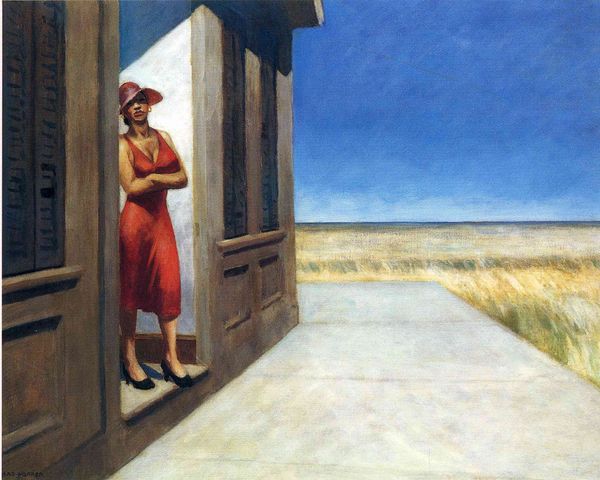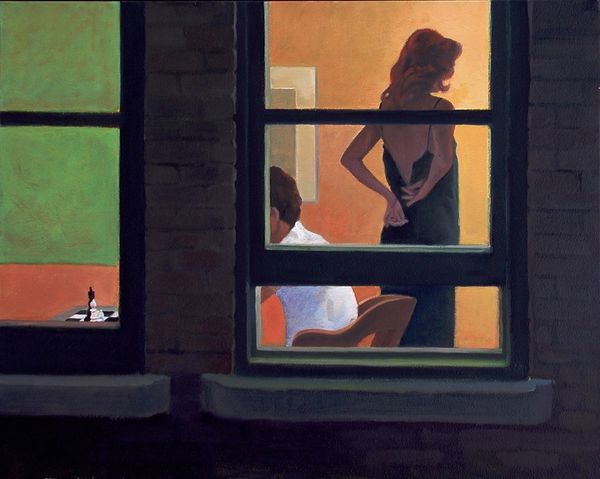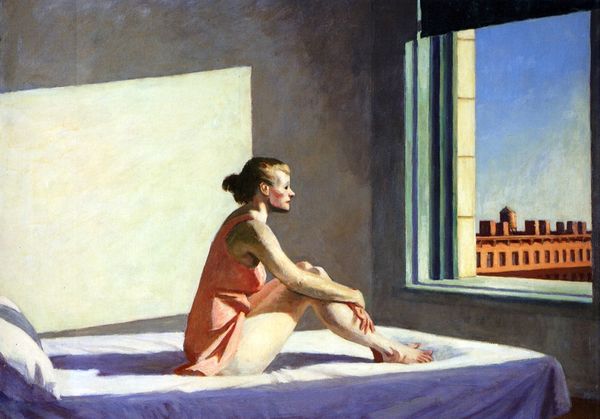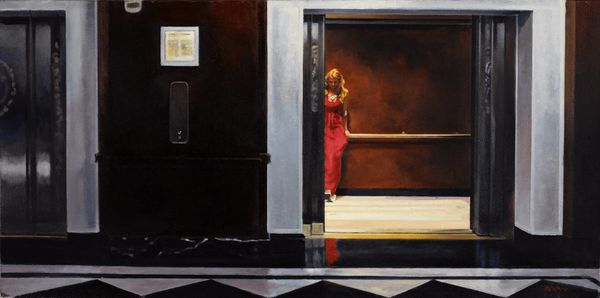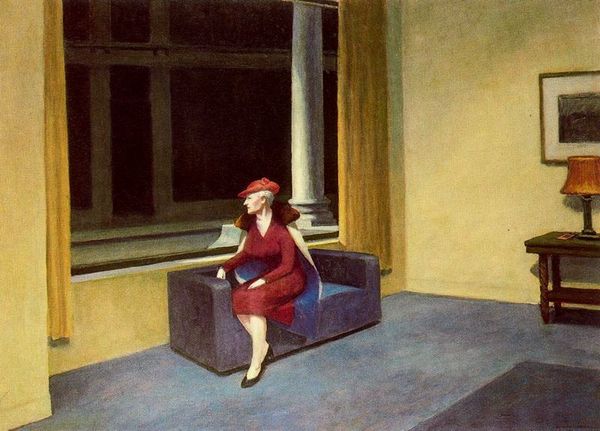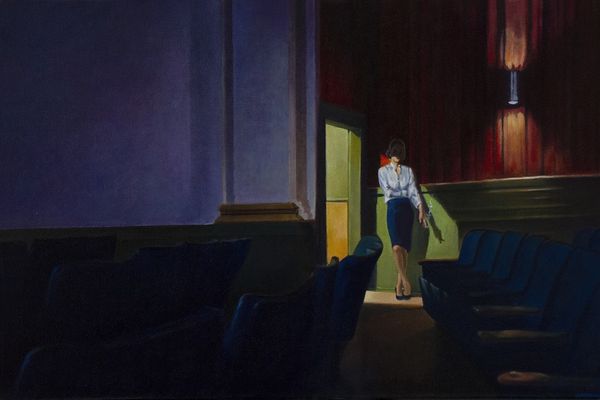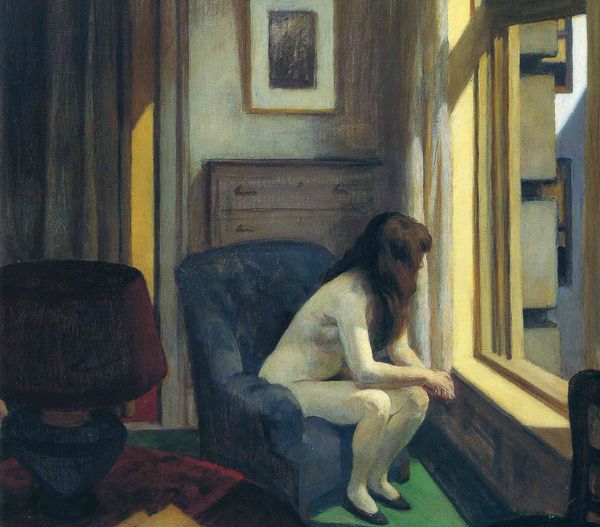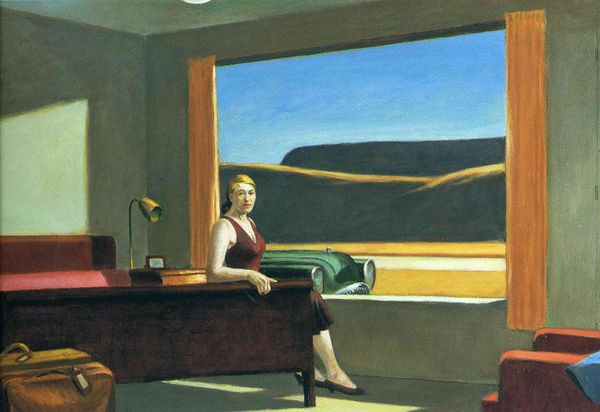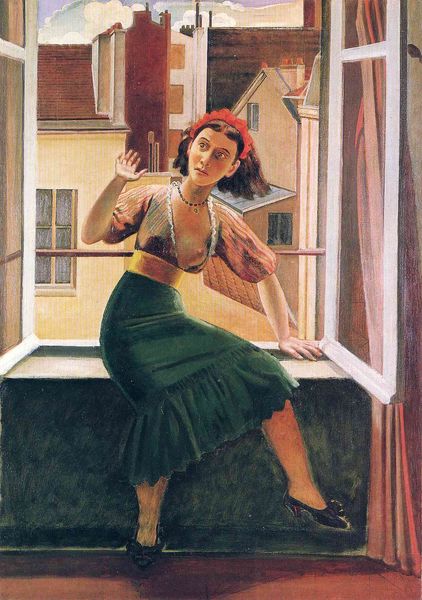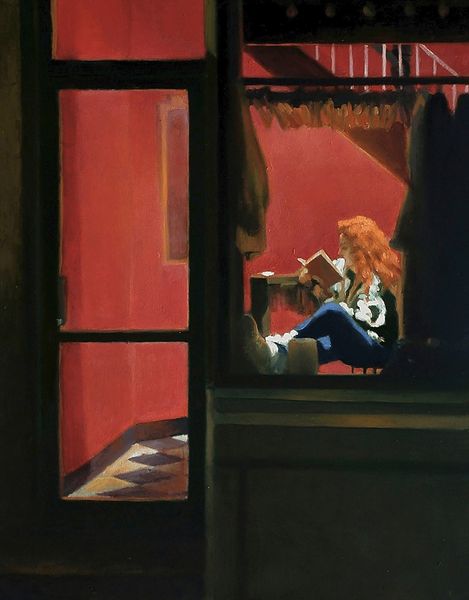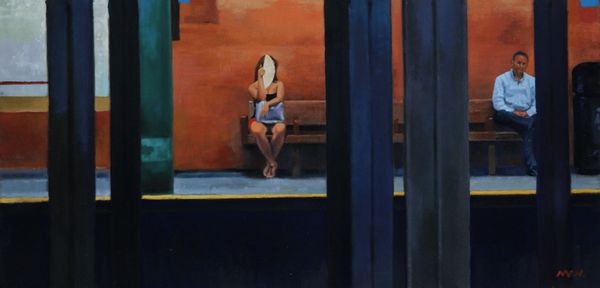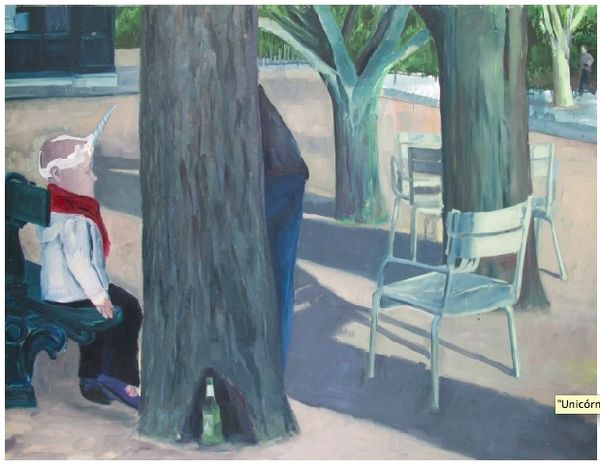
Copyright: Edward Hopper,Fair Use
Curator: Edward Hopper’s “Summertime,” painted in 1943, presents a woman standing on the steps of a building. What are your first thoughts? Editor: Stark. I immediately think of hot sun on concrete, and the rough texture of those pillars, casting deep, cool shadows. The visible brushstrokes lend a raw, unfinished feel. Curator: Note how the artist arranges form and color; the verticals of the columns are in conversation with the implied verticality of the woman herself. The window offers a recessed geometric plane balancing the large door. Semiotically, these forms could suggest confinement but are softened by the ambient summer light. Editor: True, Hopper manipulates light well—you can practically feel the humidity. But consider the materiality: Oil paint, commercially produced, layered onto canvas in quick strokes, indicative of wartime efficiency over leisurely craft. The mass production echoes the depersonalization he often depicts. Curator: His compositions invite narratives without providing specifics. The woman’s gaze—outward, slightly up—directs our own, implying anticipation. Do you feel she seeks an encounter, or does she expect some formal change, represented perhaps by those classical columns, to appear immanently? Editor: The means of creating such pieces are inseparable from what we think. Hopper likely sketched, studied light effects and adjusted his compositions for effect. That manipulation of reality—crafting of the scene through labor—reveals more about 1940s America, than any candid shot could. Curator: Hopper uses an evocative palette: the bleached-out whites, pale blues, and strong contrasts to draw out the spatial depth of the setting. His emphasis on structural elements creates a dynamic tableau. Editor: Agreed. By examining how “Summertime” was materially constructed—the quickness of execution—we recognize it’s a crafted statement about fleeting moments in rigid urban landscapes. It moves beyond surface depiction. Curator: Analyzing structure reveals his understanding of painting’s potential for communicating mood through line, form and carefully orchestrated light. Editor: Indeed, these are well expressed insights to reflect on further about materials, context, labor and that singular Hopper feeling.
Comments
No comments
Be the first to comment and join the conversation on the ultimate creative platform.


